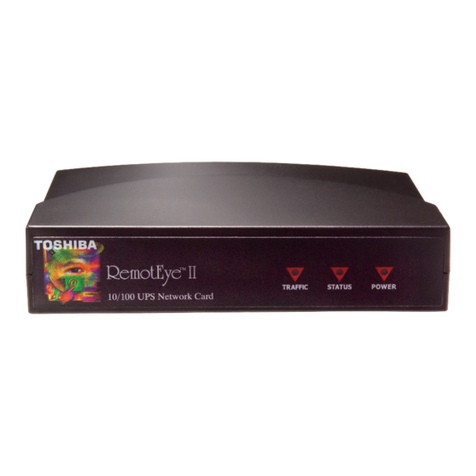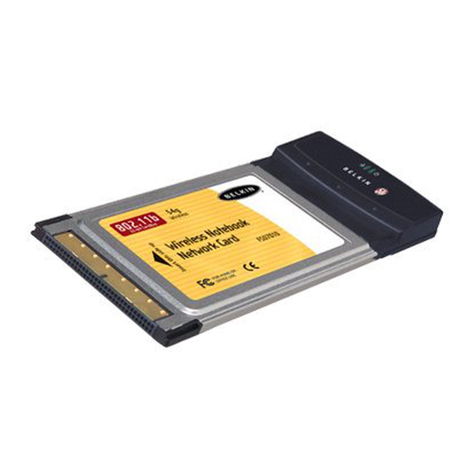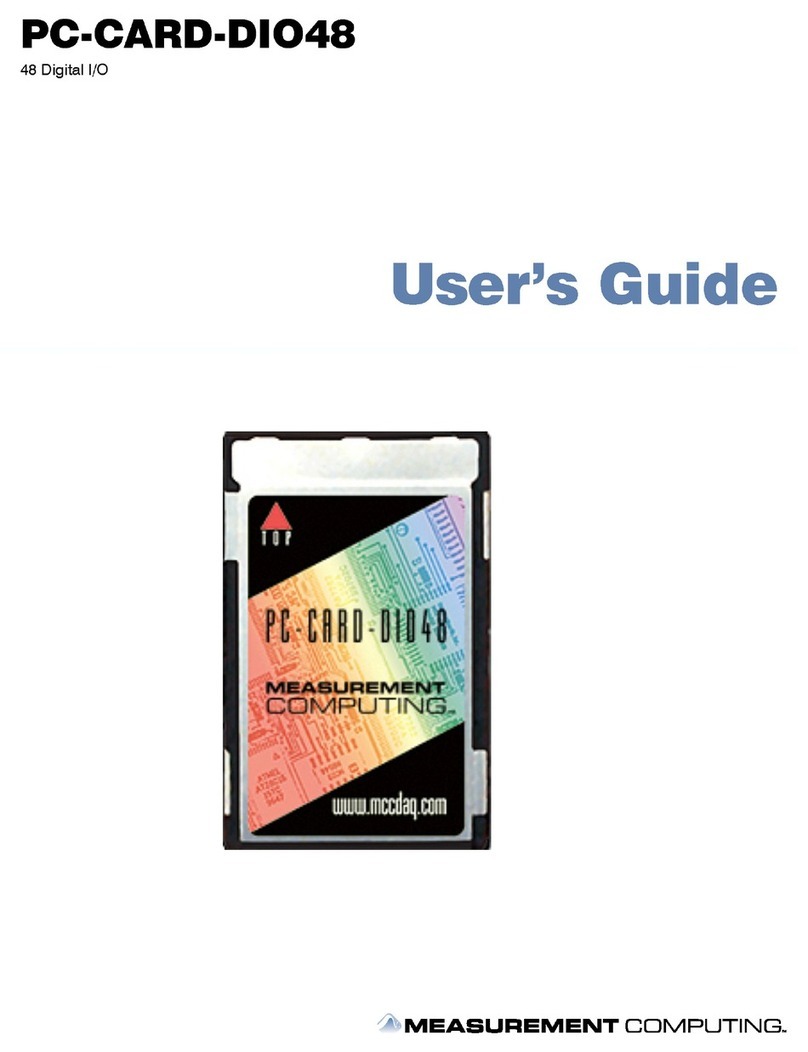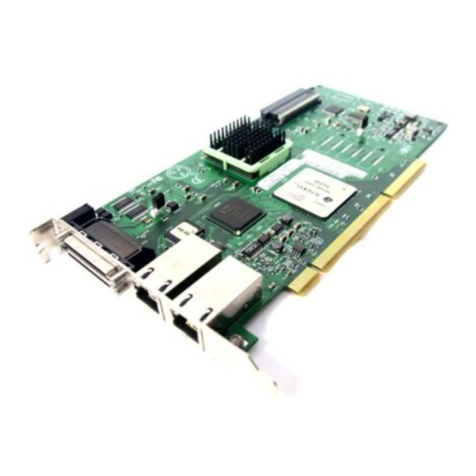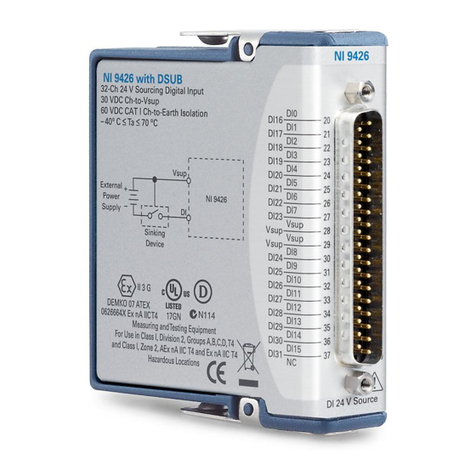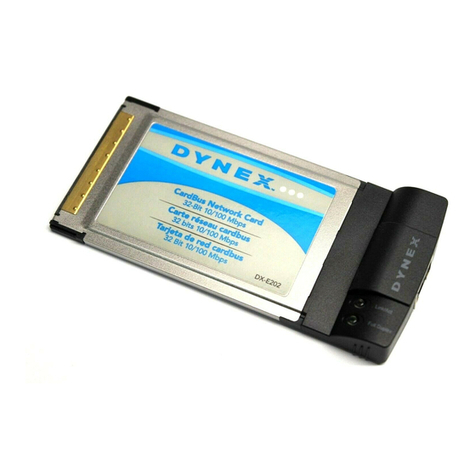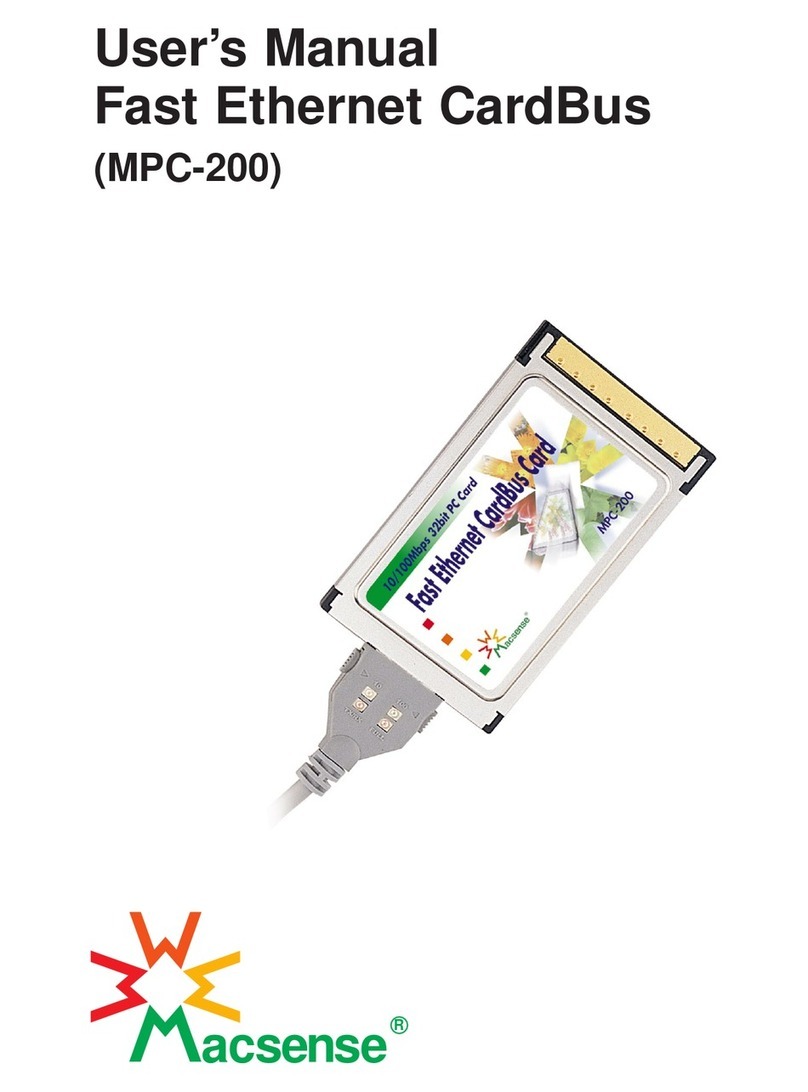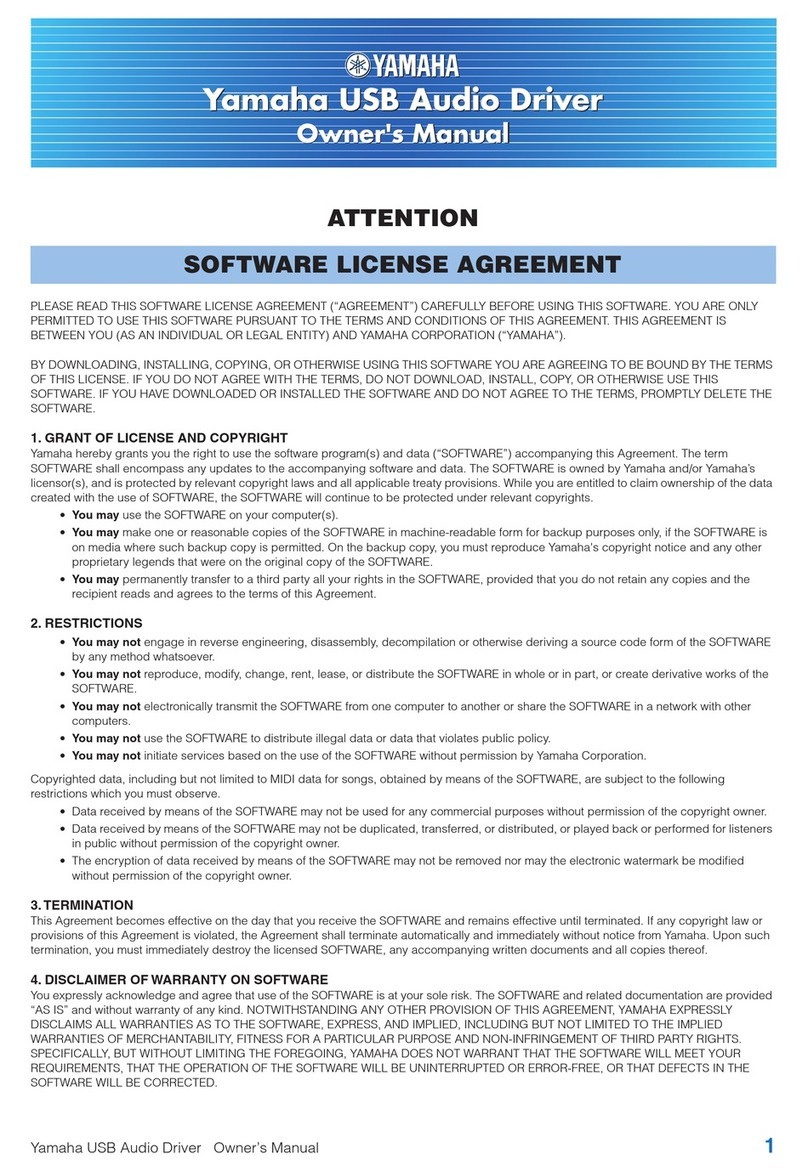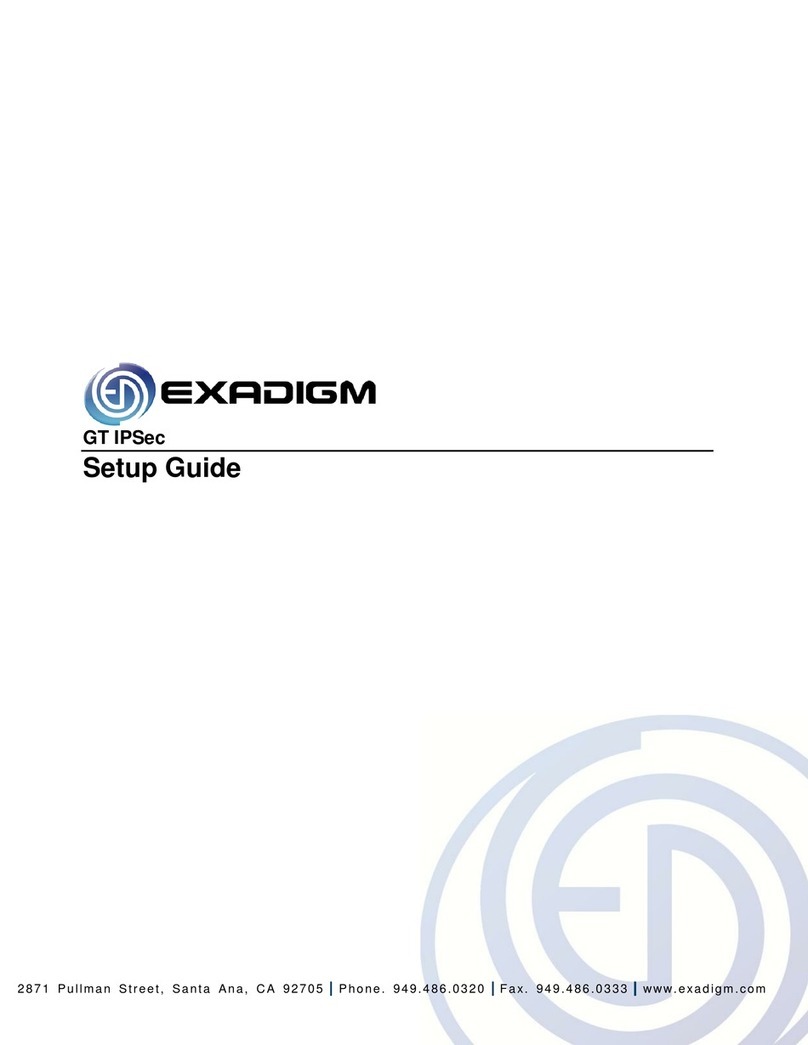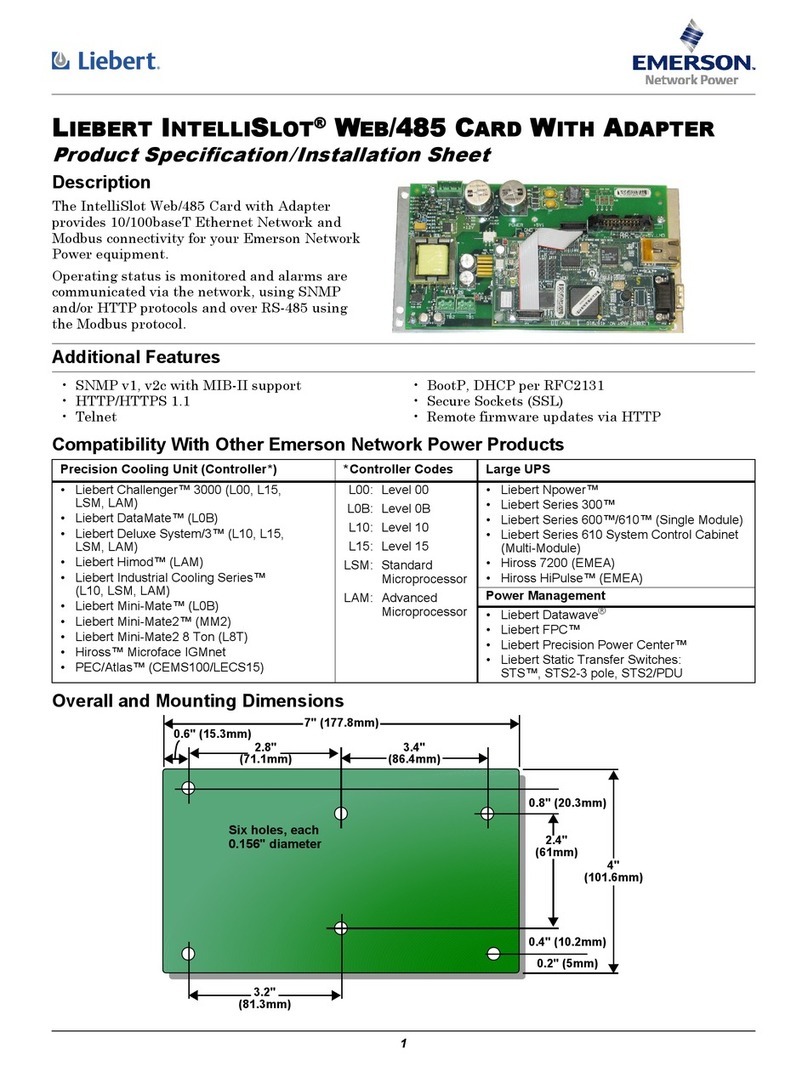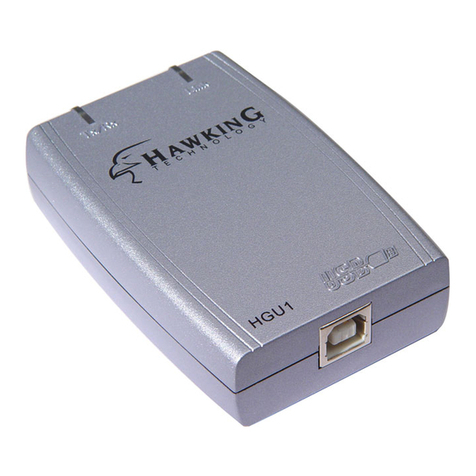Northern Airborne Technology TAC/COM SERIES User manual

CONFIDENTIAL AND PROPRIETARY TO NORTHERN AIRBORNE TECHNOLOGY LTD.
SM06
TAC/COM SERIES
Control Head
INSTALLATION AND OPERATION MANUAL
REV 4.10 January 4, 2006
Northern Airborne Technology Ltd.
1925 Kirschner Road
Kelowna, BC, Canada.
V1Y 4N7
Telephone (250) 763-2232
Facsimile (250) 762-3374
Copyright 2005 by Northern Airborne Technology


SM06 Rev. 4.10 Tac/Com Control Head Manual
Jan 4, 2006 Page ii
ENG-FORM: 820-0110.DOT
CONFIDENTIAL AND PROPRIETARY TO NORTHERN AIRBORNE TECHNOLOGY LTD.
Periodically NAT will release manual amendments. In order to maintain the most
accurate and up to date manual these amendments should be carried out immediately
upon receipt and recorded on the following amendment record.
AMENDMENT RECORD
Amendment
Number
Amendment
Date
Section(s)
Changed
Date
Entered
Entered By
Insert any Amendment Instruction sheets after this page.


SM06 Rev. 4.10 Tac/Com Control Head Manual
Jan 4, 2006 Page iii
ENG-FORM: 820-0110.DOT
CONFIDENTIAL AND PROPRIETARY TO NORTHERN AIRBORNE TECHNOLOGY LTD.
Table of Contents
Section Title Page
1 Description
1.1 Introduction 1-1
1.2 General 1-1
1.2.1 Tac/Com Control Head Family 1-2
1.2.2 Accessories 1-3
1.3 Purpose of Equipment 1-5
1.3.1 Interface Considerations 1-6
1.3.2 Mixed Transceiver System 1-6
1.3.3 Radio Capability Increase With Tac/Com 1-7
1.3.4 Master/Slave Configuration 1-8
1.3.5 Frequency Data Considerations 1-9
1.4 Hardware Design Features & Considerations 1-10
1.4.1 General 1-10
1.4.2 Display Filtering/Lighting Options 1-10
1.5 Specifications 1-11
1.5.1 Electrical Specifications 1-11
1.5.2 Physical Specifications 1-12
1.5.3 Environmental Specifications 1-13
1.6 Unit Nomenclature 1-13
1.6.1 Series Designation 1-13
1.6.2 Number Of Radios 1-13
1.6.3 Display Type 1-14
1.6.4 Display Filter/Lighting Suffix Information 1-14
1.6.5 Interface-Specific Suffix Information 1-15
2 Installation
2.1 Introduction 2-1
2.2 Unpacking and Inspection 2-1
2.2.1 Warranty 2-1
2.3 Installation Procedures 2-1
2.3.1 Warnings 2-1
2.3.2 Cautions 2-2
2.3.3 Cabling and Wiring 2-2
2.3.4 Mechanical Mounting 2-3
2.3.5 Notes 2-3
2.4 Post Installation Checks 2-4
2.4.1 Voltage/Resistance Checks 2-4
2.4.2 Power On Checks 2-4


SM06 Rev. 4.10 Tac/Com Control Head Manual
Jan 4, 2006 Page iv
ENG-FORM: 820-0110.DOT
CONFIDENTIAL AND PROPRIETARY TO NORTHERN AIRBORNE TECHNOLOGY LTD.
Section Title Page
2.5 Troubleshooting 2-6
2.5.1 Weak Receive/Transmit, Intermittent Operation, Erratic Squelch 2-6
2.5.2 Strange Noises, No Receive Audio, Transmit Keying problems 2-6
2.5.3 Some Frequencies Can't be Edited 2-6
2.5.4 Display Brightness is Too Low, Can't Increase to Full Brightness 2-6
2.5.5 Amber (RX) Squelch light comes on, but no RX audio is heard. 2-7
2.6 Final Inspection 2-7
2.7 Continued Airworthiness 2-7
2.8 Installation Drawings 2-8
2.8.1 Outline drawings 2-8
2.8.2 System Connector (J-100) 2-8
3 Operation
3.1 Introduction 3-1
3.2 General 3-1
3.3 Initial Operation 3-2
3.3.1 Power-up Help 3-2
3.3.2 Initial Operating Display 3--2
3.4 Front Panel Controls 3-3
3.4.1 Radio Specific Controls 3-4
3.4.2 General Controls - NORMAL Operation 3-6
3.5 Editing 3-10
3.5.1 Channel Editing 3-11
3.5.2 Summary of Channel Editing 3-14
3.5.3 Summary of Channel Labels 3-15
3.5.4 Summary of Subaudible Tones 3-16
3.6 Status Line Editing 3-19
3.6.1 NEXT and SELECT Switch Use 3-20
3.6.2 Status Edit Features 3-21
3.7 Channel Display Summary 3-23
3.7.1 Display Switch Set to 'ID' 3-23
3.7.2 Display Switch Set to 'RX' 3-24
3.7.3 Display Switch Set to 'TX' 3-24
3.8 Changing Display Brightness 3-25
3.9 Scanning 3-25
3.9.1 Scan Modes 3-27
3.10 NAT NTX138 Wide-band/Narrow-band Operation 3-28
3.11 Master Edit Mode 3-29
3.11.1 Entering Master Edit Mode 3-29
3.11.2 How Data is Stored in the Control Head 3-30
3.11.3 Editing Considerations 3-30
3.12 Installation & Configuration Mode 3-31
3.12.1 Entering Configuration Mode 3-31
3.12.2 Configuration Option Table 3-32


SM06 Rev. 4.10 Tac/Com Control Head Manual
Section 1 Description
1.1 Introduction
This manual contains information on the NAT Tac/Com control heads. All derivative
products and interface cards will be covered by manual supplements, which can be
obtained from NAT as required.
Information in this section consists of purpose of equipment, features and specifications.
1.2 General
The Tac/Com control head provides exceptional flexibility and ease of operation while
using minimal panel space. In a Dzus panel height of only 4⅞inches, up to four
transceiver systems can be controlled and accessed using a Tac/Com control head.
The controlled radio systems may be either NAT transceivers or combinations of
different manufacturer's transceivers.
Tac/Com controls are available in two basic families: Tac/Com I (both LED and LCD
displays), and Tac/Com II (LED only). Note that the Tac/Com I or ‘CH ‘ series control
heads have been discontinued since 1995. Tac/Com II control head variations include
2-, 3- or 4-transceiver support, master or slave versions and custom panel lighting, and
support expanded channel storage (up to 128 channels per radio), remote channel
selection, display auto-dimming, and full software configuration of the control head.
Features Tac/Com I Tac/Com II
Control/Display
Types
2 & 4 Radio LCD,
2 & 4 Radio LED
2, 3 & 4 Radio LED.
Channels/Radio 32 (NT) or 56 (non-scanning) 128 maximum.
Special
Features
HELP, Alphanumeric
Labelling of Channels
HELP, Alphanumeric
Labelling of Channels, High-
speed Scrolling, Remote
Radio/Channel Selection,
Auto Night Dimming.
Master/Slave Yes Yes
DTE12 Support No Yes
USFS Guard &
Tone Capability
No Yes
NT136-PAS
Compatible
No Yes
Jan 4, 2006 Page 1-1
ENG-FORM: 800-0108.DOT
CONFIDENTIAL AND PROPRIETARY TO NORTHERN AIRBORNE TECHNOLOGY LTD.

Tac/Com Control Head Manual SM06 Rev. 4.10
The Tac/Com control head carries its own operator's manual in internal software, and
can provide on-line help to the operator for all functions. An initial help mode at power-
up can provide a complete tutorial of the control head and its operating and storage
functions, and pressing the HELP button during either EDIT operation brings up
context-sensitive help for the specific storage or data entry function being carried out.
This provides a simple way for new staff to train, as well as providing a private method
to refresh their knowledge of the system whenever they chose. The help information
‘manual’ can never be lost or misplaced because it forms part of the basic control head
itself.
Radio control functions and transceiver interfaces are determined by a combination of
Tac/Com control head software and internal radio-specific interface cards. To specify a
complete control head, you must select the basic size format and the internal interfaces.
The range of control heads is shown graphically in the Tac/Com control head family
drawing below.
1.2.1 Tac/Com Control Head Family
Each control head type can have user-specified interfaces installed as required. Control
heads with LCD displays are no longer available (available as Tac/Com I only). Current
models are available with LED displays (Tac/Com II).
Two-Radio Control Heads
Three-Radio Control Heads
Page 1-2 Jan 4, 2006
ENG-FORM: 800-0108.DOT
CONFIDENTIAL AND PROPRIETARY TO NORTHERN AIRBORNE TECHNOLOGY LTD.

SM06 Rev. 4.10 Tac/Com Control Head Manual
Four-Radio Control Heads
1.2.2 Accessories
The Tac/Com family encompasses numerous specialized accessories to extend system
capability, as well as transceivers and the control heads reviewed in this manual.
NAT transceiver capabilities are covered in separate manuals. For reference, the
additional system components include:
1.2.2.1 Remote Mount VHF FM Transceivers
*NT030A-xxx Low Band
*NT030B-xxx Low Band
*NT136-xxx High Band
*NT150-xxx High Band
NTX066-xxx Mid Band
NTX138-xxx High Band/Narrow Band Compatible, available with USFS
Custom Guard option
NTX138E-100 High Band/Direction Finding (DF) Capability/Enhanced
environmental specifications
1.2.2.2 Remote Mount UHF FM Transceivers
*NT403-xxx Low Band
*NT450-xxx High Band
*NT450x-xxx High Band
*NT806-000 800 MHz
NTX403-xxx Low/High Band
* No longer available as new products.
Jan 4, 2006 Page 1-3
ENG-FORM: 800-0108.DOT
CONFIDENTIAL AND PROPRIETARY TO NORTHERN AIRBORNE TECHNOLOGY LTD.

Tac/Com Control Head Manual SM06 Rev. 4.10
1.2.2.3 TE12/DTE12/DP12 DTMF Tone Generator/Keyboard Data Entry Unit
These devices can output DTMF signalling tones from either keyboard control or stored
sequences, and can serve as a direct keyboard data entry system for Tac/Com control
heads to change channels and frequencies. Consult NAT Ltd. for further information.
1.2.2.4 RA10 Remote Attenuator
This group of remote signal attenuators can be used to alter receive and transmit
performance and range under operator control. They allow compliance with restricted
transmit power regulations even when the radio itself cannot alter its transmit level.
They are used extensively in Europe for changing TX power to even lower levels than
the 1W output possible via Tac/Com transceivers directly, and to reduce RX
interference from closely spaced repeaters by reducing RX sensitivity.
1.2.2.5 Tactical Direction Finding (TDF) System
This 2-axis DF system allows both left-right and fore-aft sensing with a pictorial display.
This provides exceptional accuracy during search and rescue and remote tracking
operations, and also provides a positive indication of station passage (impossible with
single axis systems) to aid in exact target location.
1.2.2.6 CC250/450 Communications Controllers
The CC250/450 is a compact, easy to install communications controller. It is designed
to provide relay and/or simulcast operation for up to 4 transceivers. With these
functions, the aircraft can become an airborne repeater or a multi-frequency transmitting
platform. When used to its potential, the CC250/450 provides increased efficiency and
reduced workload for communication operations. Only the CC450-0V2 is currently in
production.
1.2.2.7 CTE12 CalquestHeadset Adapter
The CTE12-100 CalquestHeadset Adapter is designed to interface standard avionics
headsets to the CalquestCabin Network Unit (CNU). The headset adapter provides a
DTMF keypad, status indicators, ring chime control, ring/in-use annunciator control and
VOX squelch capability. The headset adapter can interface directly to a headset or a
standard avionics audio panel.
1.2.2.8 UT12 Universal Tone Encoder/Decoder
The UT12-000 is capable of encoding and decoding 5-tone CCIR tone sequences and
DTMF tones. It is compatible with the NAT Tac/Com system, and when used in
conjunction with a TH-series Tac/Com control head provides broader and easier control
over tones. The control head or transceiver can select, enable, disable and display
tones by communicating with the UT12-000 through a serial port.
Page 1-4 Jan 4, 2006
ENG-FORM: 800-0108.DOT
CONFIDENTIAL AND PROPRIETARY TO NORTHERN AIRBORNE TECHNOLOGY LTD.

SM06 Rev. 4.10 Tac/Com Control Head Manual
1.3 Purpose of Equipment
The Tac/Com series of control heads provides a centralized location for tactical radio
control and channelling of up to four independent transceiver systems. Only the
Tac/Com II series will be considered; for further information, contact NAT Ltd.
Alphanumeric labeling of each radio channel is provided, as well as a display of receive
and transmit frequencies, to ease pilot identification of the selected channel on each
radio.
At the Tac/Com (master) control head, individual radio receive volume and radio power
on/off status can be controlled. Individual radio functions can also be set, such as
scanning, tones, simplex/duplex, TX power and others. Annunciation is provided for TX
and RX activity on a per transceiver basis, and the main display can be set to show the
channel name (alphabetic label), the receive frequency and tone data, or the transmit
frequency and tone data for all radios via the general control group.
Radio
Controls
General
Controls
TH250 Control
(2 Radios, 256 Total Channels)
Within the control head, individual radio interface cards translate the control head
commands into suitable channelling data for each specific type of radio connected.
Software controlling these functions, as well as the built-in help screens for control head
operation, is located on the main control head CPU board and can be easily replaced to
upgrade or improve control head functions.
The software of the control head's computer can emulate many types of parallel tuned
radio controls and this allows the Tac/Com system to directly replace many existing
controls such as the C-960, C-961, C-962A, C-722A and C-1000. In addition, since the
Tac/Com control allows control of up to four simultaneous radio systems, the single
Tac/Com control can replace up to four individual controls, with a substantial reduction
in cost and panel space. The following diagram illustrates a system that shows this
multiple radio capability using NAT NT-series agile transceivers. Any combination of
radios could be used by installation of the appropriate interface cards within the control
head. In the example below, an accessory DTE12 is used for DTMF tone generation
and direct keyboard data input to the TH450.
Jan 4, 2006 Page 1-5
ENG-FORM: 800-0108.DOT
CONFIDENTIAL AND PROPRIETARY TO NORTHERN AIRBORNE TECHNOLOGY LTD.

Tac/Com Control Head Manual SM06 Rev. 4.10
1.3.1 Interface Considerations
Tac/Com offers direct plug compatibility for replacement of C-962/A and C-722/A control
heads (for use with the RT-9600 and RT-7200), including the second audio connector.
For USFS applications, Tac/Com provides some additional capability when used with the
RT-9600. Full guard receiver control can be brought out on the front panel, and the
limited tone capability of the RT-9600 (8 variable tones) can be replaced with the internal
tone capability of the Tac/Com ‘U’ interface, which provides all 32 standard CTCSS tones.
This interface remains plug-compatible, and also eliminates the awkward external tone
encoder required on USFS contracts. A USFS-compatible ‘V’ interface is provided for
use with NT150-050 guard-equipped radios, and the 'H' interface is designed for use with
the NTX138-050.
For use with existing Flexcomm installations, NAT provides an adapter cable (p/n
FC41-000 Flexcable) that permits direct connection from C-1000 airframe connectors
to the ‘F’ interface.
1.3.2 Mixed Transceiver System
The example shows a four radio Tac/Com control head running a mixed transceiver
group, to illustrate what is possible with the interface flexibility of Tac/Com internal
architecture. Transceivers may be a combination of fixed and agile radios, with and
without scanning, and can be from any of the supported interfaces that NAT provides.
See section 1.6.5 or consult Product Support at NAT for further information.
Page 1-6 Jan 4, 2006
ENG-FORM: 800-0108.DOT
CONFIDENTIAL AND PROPRIETARY TO NORTHERN AIRBORNE TECHNOLOGY LTD.

SM06 Rev. 4.10 Tac/Com Control Head Manual
1.3.3 Radio Capability Increase With Tac/Com
Wherever possible, NAT has increased the capability of other transceivers via the
Tac/Com control head, and those features are summarized below, compared to the
original controls:
Feature Tac/Com I Tac/Com II C1000 C962/722
Stored Channels 32/56 per Radio 128 per Radio 30 Total 15 Total
PL Tones* 38 + 83 DPL 38 + 83 DPL
32 for W.E.D.
32
32 for W.E.D. 8
No. of Transceivers
(simultaneous) 1 - 4 1 - 4 1 1
Alpha Labels Yes Yes No No
Remote Selection
(channels & radio) No Yes No No
Master/Slave
(both active) Yes Yes No No
*NAT NT-series Radios have the capability shown. Tac/Com controls can provide 32
PL tones for Flexcomm. Tac/Com II can also provide an internal tone upgrade for the
RT-9600/7200 to provide all 32 standard EIA CTCSS tones (‘U’ interface).
PL = Private Line (also known as CTCSS)
DPL = Digital Private Line
W.E.D. = Wulfsberg Electronics Division
Note: Only NAT's own NT-series transceivers support all the features provided by
Tac/Com controls. Tac/Com controls cannot give a radio functions of which it is
inherently incapable. For example, older crystal-controlled Flitefone 40's do not
become agile radios when connected to a Tac/Com head, and Flexcomm radios
do not acquire high speed scanning or DPL capability.
Jan 4, 2006 Page 1-7
ENG-FORM: 800-0108.DOT
CONFIDENTIAL AND PROPRIETARY TO NORTHERN AIRBORNE TECHNOLOGY LTD.

Tac/Com Control Head Manual SM06 Rev. 4.10
1.3.4 Master/Slave Configuration
One powerful configuration that NAT's Tac/Com controls support is the master/slave
configuration. In this configuration, two controls can be active at the same time (flight
crew and medical crew, for example), and both can select channels and radios. The
extraordinary aspect of this interface is the fact that this interconnect requires only 6
additional wires to give full support to both stations. Dual controls wired with other units
often require hundreds of wires, and still permit only a single control to be active at one
time.
A typical master/slave interconnect is illustrated below for clarification. Many
variations are possible, and the controls can be 2, 3 or 4 radio types, if required.
Page 1-8 Jan 4, 2006
ENG-FORM: 800-0108.DOT
CONFIDENTIAL AND PROPRIETARY TO NORTHERN AIRBORNE TECHNOLOGY LTD.

SM06 Rev. 4.10 Tac/Com Control Head Manual
1.3.5 Frequency Data Considerations
Tac/Com controls have an intelligent editor that prevents incorrect data entry when
programming frequencies for a given agile radio. VHF radios can receive only valid
VHF frequencies; UHF radios only UHF frequencies at the correct intervals, and so on.
This greatly eases operator use, and prevents many common pilot errors. The C-1000
permits many types of incorrect entries for radios because of its thumbwheel entry
system. This intelligent editor is especially useful when the Tac/Com control head has
been set to emulate a C-1000 (i.e., channel any Flexcomm radio), as it detects the
range of the radio as the data is being entered, and then restricts subsequent
information to correspond to the exact radio type.
Radios in each band-split have specific channel interval assignments (by law), and are
typically on 25 kHz, 15 kHz, 12.5 kHz, 6.25 kHz, 5 kHz or 2.5 kHz intervals. Which
multiples are possible depends on the design of the radio's synthesizer circuitry, history
and restrictions of the country of operation. Tac/Com automatically picks the correct
multiples for each radio type based on the stored installation data, and ensures that only
valid choices are possible for the operator.
If the operator enters invalid data via either external data entry or other procedure, the
control will advise of this error. User intervention is then required to correct the data
before proper radio operation can be achieved.
1.3.5.1 Frequency Programming
There are three ways to program channel data into a Tac/Com control head:
a) From the front panel controls (edit mode).
b) From a DTE12 Keyboard/Data Unit (edit mode, Tac/Com II only).
c) From a PC via NAT's data loading software & the system serial port.
1.3.5.2 Channel Selection
There are three ways to select a channel on a Tac/Com control head:
a) From the front panel controls.
b) From the remote select switches (Tac/Com II only).
c) From a DTE12 Keyboard/Data Unit (Tac/Com II only).
Jan 4, 2006 Page 1-9
ENG-FORM: 800-0108.DOT
CONFIDENTIAL AND PROPRIETARY TO NORTHERN AIRBORNE TECHNOLOGY LTD.

Tac/Com Control Head Manual SM06 Rev. 4.10
1.4 Hardware Design Features & Considerations
1.4.1 General
The Dzus mounted Tac/Com control heads use extremely high quality components,
including sealed gold contact switches, gold contact connectors and fully masked,
conformal-coated FR4 flame retardant circuit boards. Each unit is fully temperature
cycled, life-tested, and then supported with a solid one-year warranty and extensive
field support to ensure the best possible customer satisfaction.
A wide range energy conversion power supply is used in the control head, allowing
operation from 16-33 Vdc, for nominal 28 Vdc systems. Panel lighting must be adjusted
to suit the specific application, and is normally supplied as natural colouration 28 Vdc
incandescent lighting. Options include blue/white or NVG lighting available in +5, +14
or +28 operating voltages.
For ease of service, integrated circuits are socketed where possible, allowing fast return
to service of failed control heads and quicker bench troubleshooting. Control head
software is easily updated for improved features or expanded capability by an internal
EPROM exchange. Internal interface cards are plug-in modules to facilitate quick
service exchange or upgrade.
Wherever possible, fully plug-compatible interconnects are provided for existing systems
replaced by Tac/Com controls, making retrofits and test flights both easy to accomplish
and inexpensive. Where it is not possible to directly accomplish this within the control
head itself, an adapter cable or plug replacement on an existing cable is used.
1.4.2 Display Filtering/Lighting Options
Current LED displays used in Tac/Com II control heads are green (first generation
Tac/Com I controls used a yellow display), with fully formed 5x7-pixel alphanumeric
characters. They have a large character height of 5 mm/0.2" and a very wide viewing
angle (>150 degrees) that provides good readability from virtually all cabin mounting
locations, including centre consoles such as in the Bell 412/212.
Several display filter/panel lighting options are provided with LED controls to give the
best visual presentation in different ambient lighting conditions. ‘Filter’ refers to the
DISPLAY colour and appearance and ‘Panel Lighting’ refers to the panel legend back
lighting colour & voltage.
See Section 1.6 Unit Nomenclature for complete option list details.
The backlighting for the control head (which includes the LCD display) can be run from a
dimmer separate from other cockpit controls if more adjustment over the LCD back lighting is
desired. This will permit both backlighting and contrast to be adjusted for the best presentation.
The LED display automatically dims (on current production units) to 50% intensity when voltage
is detected on the control head light bus. The LED display is adjustable in 7 steps via the
SELECT (+/-) switch, when the Bright +/Dim - screen is displayed.
Page 1-10 Jan 4, 2006
ENG-FORM: 800-0108.DOT
CONFIDENTIAL AND PROPRIETARY TO NORTHERN AIRBORNE TECHNOLOGY LTD.

SM06 Rev. 4.10 Tac/Com Control Head Manual
1.5 Specifications
1.5.1 Electrical Specifications
Input Power: 16-33 Vdc.
Current: 0.25 A/LED Control 250 Series
0.35 A/LED Control 350 Series
0.45 A/LED Control 450 Series
0.15 A/LCD Control 400 Series
+0.075 A/Interface Card Installed (for all types)
+0.250 A/28 Vdc for panel lighting
Values above are maximum, display set to full intensity.
Panel Indicators: Two-colour LED indicates: TX - Green
RX (SQ) - Orange
One LED per radio, except when the interface
supports separate guard controls (‘U’, ‘V’, etc.), in
which case a second LED is provided for the guard
receiver.
Channel Storage: CH-series (Tac/Com I) 32/56 Channels per radio
TH series (Tac/Com II) 128 Channels per radio
Data Interface: Programming via standard RS-232 from a PC (NAT
software), or front panel for all functions.
Scanning: NT -series transceivers: 90 channels/second/radio.
NTX -series transceivers: 10-20 channels/second/radio.
Modes are LIST, PRIORITY, LIST + PRIORITY.
Priority monitoring is 3 times/second for 10-15 ms sample.
Radio will re-channel to the priority channel if traffic is
detected, and returns to the monitor channel after a 2
second latency.
All CTCSS tones or DPL codes are inactive during
scanning (due to lock delay).
Other scanning parameters depend on the radio type.
Jan 4, 2006 Page 1-11
ENG-FORM: 800-0108.DOT
CONFIDENTIAL AND PROPRIETARY TO NORTHERN AIRBORNE TECHNOLOGY LTD.

Tac/Com Control Head Manual SM06 Rev. 4.10
1.5.2 Physical Specifications
Height Tac/Com Series Rail Height Required
250/260 and 350/360 3.00”
450A 3.75”
450B and 460B 3.375”
450/460 4.875”
Length 6.27 inches (159.3 mm) excluding connector
Width 5.8 inches (146.1 mm)
Weight 2.2 to 2.9 lbs (1 kg to 1.3 kg) depending on model
Mounting Horizontal through-panel Dzus mount.
Fits standard opening (5" clearance/5.75" panel width)
Requires 3" of rail height (450 series require 4.875")
Front Panel Controls: Radio Volume/Power ON-OFF
One or two radio-specific controls
Display Contrast (LCD)
Display Mode (ID/RX/TX)
Channel/Select (+/-)
Radio/Next
Edit Switch (Channel-Off-Status)
Squelch/Help
Internal Controls: Agile Channel Defeat/Enable (on interface cards)
Lamp Dimmer Voltage (Panel Overlay)
Squelch, Tone & Level Preset where applicable
Tac/Com I Only, pre-s/n 1129:
NAT R/T Band Select
RT-9600/7200 Mode Select
Flexcomm Band Select
Overall form factor matches C-722A/C-962A/C-1000
QA/Manufacturing Processes: TC AWM PART 561
MIL-STD-2000 (MU) Assembly
ISO9001-1994
Page 1-12 Jan 4, 2006
ENG-FORM: 800-0108.DOT
CONFIDENTIAL AND PROPRIETARY TO NORTHERN AIRBORNE TECHNOLOGY LTD.
This manual suits for next models
6
Table of contents
Popular Network Card manuals by other brands
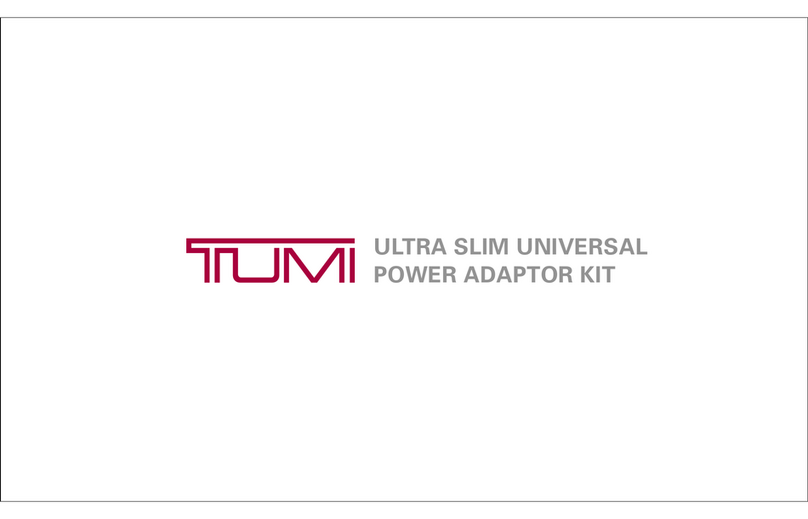
Tumi
Tumi Network Card user manual
Eicon Networks
Eicon Networks C2x Family installation guide
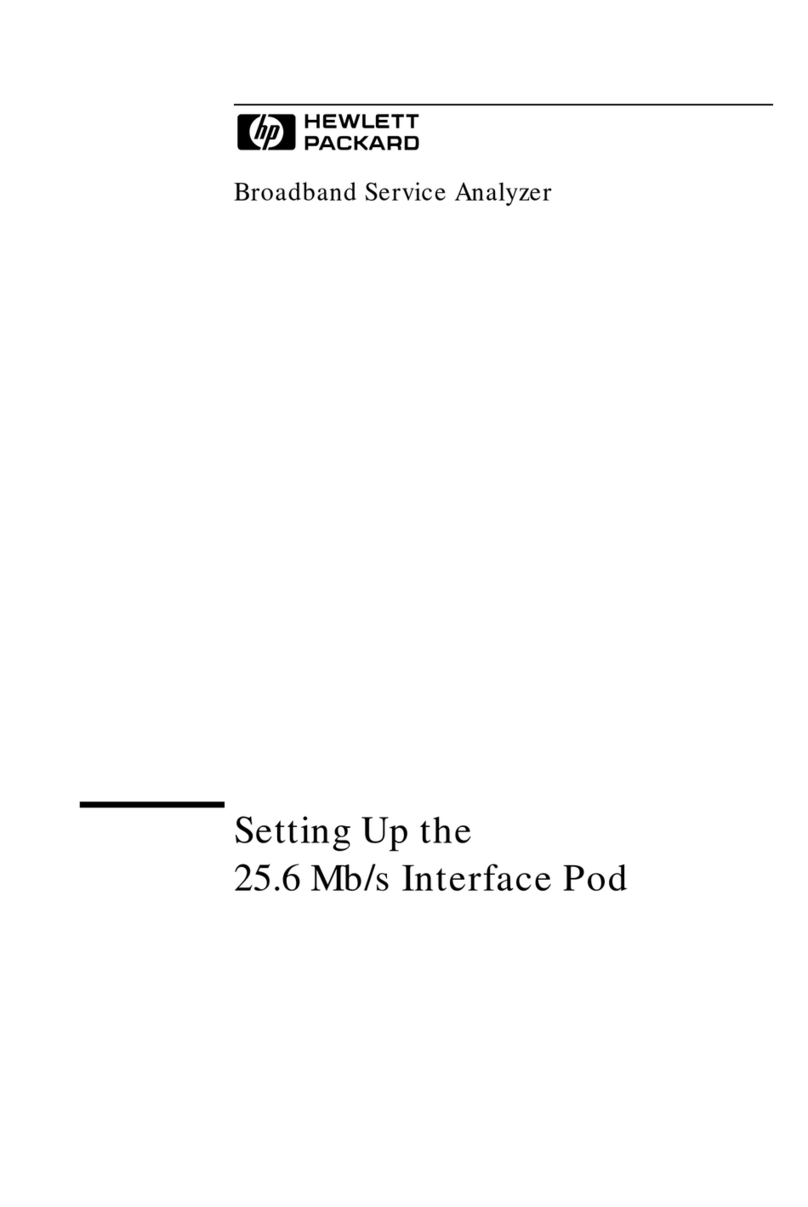
HP
HP Broadband Service Analyzer user manual
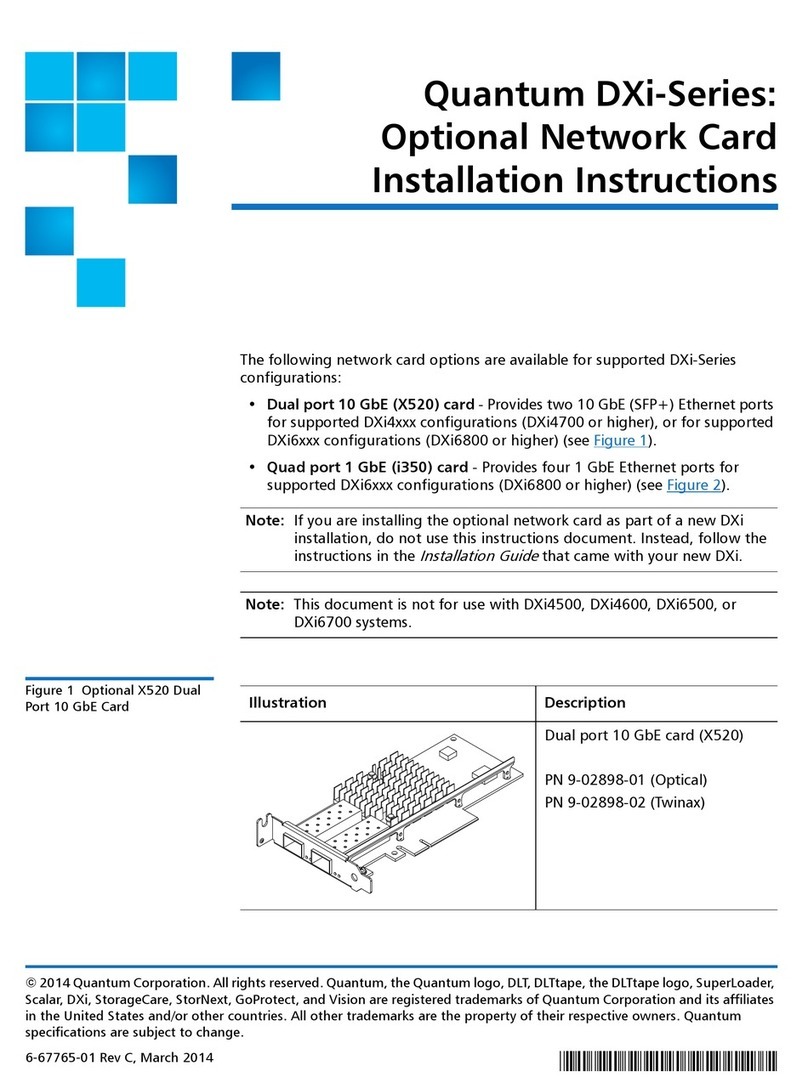
Quantum
Quantum Optional X520 Dual Port 10 GbE Card installation instructions

ZWO
ZWO Asiair quick guide
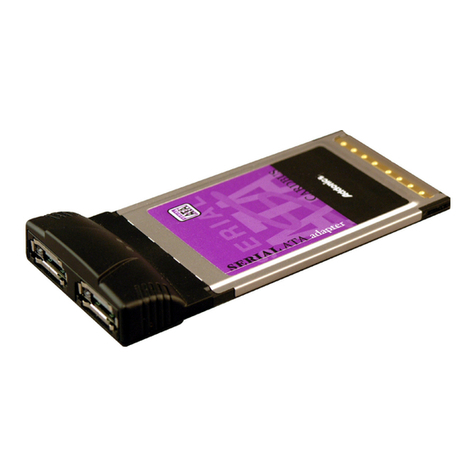
Addonics Technologies
Addonics Technologies ADCB2SA-E installation manual
